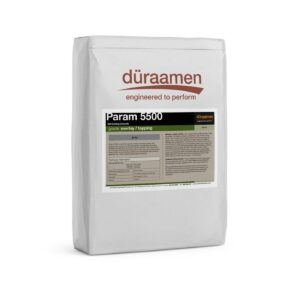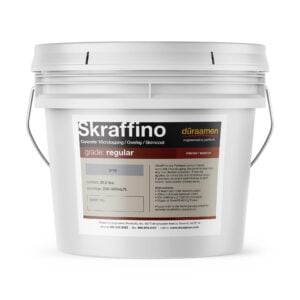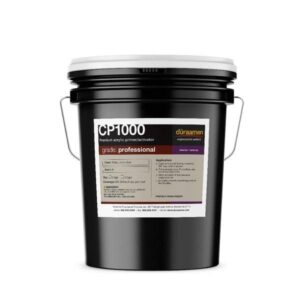Epoxy flooring has become a popular choice for a wide range of applications, from industrial settings to commercial spaces and even residential areas. Its exceptional durability, chemical resistance, and aesthetic appeal make it a compelling flooring solution. However, to truly appreciate the advantages of epoxy floors, it’s essential to delve into the science behind this remarkable material. In this comprehensive guide, we will explore the intricate chemistry and engineering principles that underlie epoxy flooring systems.
Epoxy Flooring Basics
Before delving into the science, let’s start with the basics. Epoxy flooring consists of epoxy resins and curing agents that, when mixed together, undergo a chemical reaction resulting in a rigid plastic material. This material is applied as a coating over concrete floors to create a seamless, durable surface. Epoxy flooring is known for its:
Chemical Resistance: Epoxy floors can withstand chemical spills and are highly resistant to corrosion, making them ideal for industrial applications where exposure to harsh chemicals is common.
Durability: Epoxy coatings are incredibly durable and can withstand heavy loads, including the weight of heavy machinery.
Aesthetic Appeal: Epoxy flooring comes in a variety of colors and finishes, offering a customizable and attractive look.
Low Maintenance Costs: Epoxy floors are easy to clean and require minimal maintenance in the long run.
Now, let’s delve into the science behind these impressive properties.
The Chemistry of Epoxy Resins
At the heart of epoxy flooring systems are epoxy resins, which are organic compounds containing epoxide groups. The most common epoxy resin used in flooring applications is derived from bisphenol A (BPA). These resins are typically in liquid form and serve as the base material for epoxy flooring.
When epoxy resins are combined with a curing agent, a chemical reaction known as polymerization occurs. This reaction involves the formation of covalent bonds between the epoxy resin molecules and the curing agent molecules. As a result, the liquid epoxy resin transforms into a rigid plastic material.
The specific choice of epoxy resin and curing agent can vary depending on the type of epoxy flooring system being used, and this plays a crucial role in determining the flooring’s performance characteristics.
The Epoxy Flooring Installation Process
Understanding the epoxy flooring installation process is essential to appreciate the science behind it. Here are the key steps:
Surface Preparation: The concrete surface must be thoroughly prepared to ensure proper adhesion. This involves cleaning, etching, and, in some cases, using mechanical surface preparation equipment to create a rough profile for better adhesion.
Primer Application: A layer of epoxy primer is applied to the prepared surface. The primer helps improve adhesion and ensures a strong bond between the epoxy coating and the concrete substrate.
Epoxy Application: The epoxy resin and curing agent are mixed according to the manufacturer’s specifications and applied to the primed surface. This mixture forms the base layer of the epoxy flooring system.
Top Coat Application: Once the base layer has cured to a specific point, a top coat is applied. This top coat serves as the protective layer, providing additional durability, chemical resistance, and aesthetic appeal.
Curing Process: Epoxy flooring requires a curing process, during which the chemical reaction between the epoxy resin and curing agent takes place. The curing time can vary based on ambient conditions such as temperature and humidity levels.
Finishing Touches: Depending on the specific needs of the project, additional finishing touches may be applied. These can include slip-resistant additives for safety or decorative flakes to enhance the visual appeal.
The Science Behind Epoxy’s Strength
Epoxy flooring’s exceptional strength can be attributed to the chemistry and molecular structure of the cured epoxy material. Here are some key factors:
Polymer Chains: During the curing process, the epoxy resin molecules link together to form long-chain structures. These polymer chains create a strong and cohesive material.
Covalent Bonds: The chemical reaction between the epoxy resin and curing agent forms covalent bonds. Covalent bonds are strong chemical bonds in which electrons are shared between atoms. This type of bonding contributes to the material’s high tensile strength and chemical resistance.
Temperature Changes: Epoxy flooring is designed to withstand temperature changes without warping or cracking. This is due to its ability to expand and contract without losing its structural integrity.
Heavy Loads: The rigid nature of the cured epoxy material allows it to support heavy loads, making it suitable for industrial environments where heavy machinery and vehicle traffic are common.
Chemical Resistance in Epoxy Flooring
One of the standout features of epoxy flooring is its remarkable chemical resistance. This property is rooted in the chemical structure of epoxy resins. Epoxy coatings create a dense, impermeable surface that repels liquids and prevents them from penetrating the underlying concrete.
This impermeability is particularly beneficial in settings where chemical spills are a concern, such as manufacturing plants, car dealerships, and laboratories. Epoxy flooring not only prevents these chemicals from seeping into the concrete but also resists damage from prolonged exposure.
Epoxy Flooring’s Slip Resistance
Slip resistance is crucial for ensuring safety in both industrial and commercial spaces. Epoxy flooring can be customized to include slip-resistant additives, which are incorporated into the topcoat during the installation process. These additives create a textured surface that improves traction, reducing the risk of slips and falls.
Variety of Colors and Aesthetic Appeal
The aesthetic appeal of epoxy flooring is another aspect that can be explained by its science. Epoxy coatings are available in a wide variety of colors and finishes, allowing for creative and customized designs. This is made possible by the ability to add pigments to the epoxy resin before application. These pigments disperse evenly throughout the epoxy, resulting in a solid color epoxy floor or intricate decorative patterns.
Epoxy Flooring’s Application in Different Environments
Epoxy flooring’s adaptability and durability make it suitable for a wide range of environments, including:
Industrial Settings: Epoxy flooring can withstand the rigors of industrial environments, including exposure to heavy machinery, chemical spills, and high foot traffic.
Commercial Spaces: From retail stores to office spaces, epoxy flooring presents a durable and attractive flooring solution for businesses looking to make a lasting impression.
Garage Floor Coating: Epoxy is a popular choice for garage floor coatings due to its ability to withstand vehicle traffic, chemical spills, and more.
Sports Facilities: Epoxy flooring is often used in sports facilities due to its durability, slip resistance, and ease of maintenance.
Commercial Buildings: Epoxy flooring systems can enhance the aesthetic appeal and durability of commercial buildings, contributing to a professional and inviting atmosphere.
Types of Epoxy Flooring Systems
Epoxy flooring systems are not one-size-fits-all. The choice of epoxy system depends on the specific needs and requirements of the project. Here are some common types of epoxy flooring systems:
Water-Based Epoxy: Water-based epoxies are environmentally friendly and emit fewer volatile organic compounds (VOCs). They are ideal for projects where harmful fumes need to be minimized.
Solvent-Based Epoxy: Solvent-based epoxies offer high performance and durability. They are often used in industrial settings and areas with heavy chemical exposure.
Self-Leveling Epoxy: Self-leveling epoxy is used to create a smooth, seamless surface. It’s commonly applied in commercial and industrial spaces where a flat, even floor is essential.
Moisture-Resistant Epoxy: In areas with high moisture levels, such as bathrooms and kitchens, moisture-resistant epoxy prevents water from seeping into the substrate.
Decorative Epoxy: Decorative epoxy flooring systems allow for a wide range of design options, including the incorporation of decorative flakes, metallic pigments, and intricate patterns.
The Role of Professional Epoxy Flooring Installers
While understanding the science behind epoxy flooring is essential, it’s equally important to recognize the significance of experienced epoxy flooring installers. Proper surface preparation, accurate mixing of epoxy components, and precise application techniques are critical to achieving the best results and ensuring the longevity of the flooring.
The Long-Term Benefits of Epoxy Flooring
In summary, epoxy flooring presents a range of benefits that are deeply rooted in its scientific properties:
Durability: Epoxy flooring can stand the test of time, even in high-traffic areas and under heavy loads.
Chemical Resistance: Its impermeable surface resists damage from chemical spills and exposure.
Aesthetic Appeal: Epoxy flooring provides a variety of colors and design options to enhance the look of any space.
Low Maintenance Costs: Its ease of cleaning and resistance to wear and tear result in lower maintenance costs over the long run.
Slip Resistance: Customizable slip-resistant options improve safety in various environments.
Understanding the science of epoxy flooring not only deepens your appreciation for its advantages but also empowers you to make informed decisions when considering it as a flooring solution. Whether it’s for industrial settings, commercial spaces, or even residential areas, epoxy flooring systems have proven to be a versatile and reliable choice. As an industry leader in epoxy flooring, Duraamen continues to provide innovative solutions that combine the art and science of epoxy to transform spaces and meet the specific needs of our clients.






